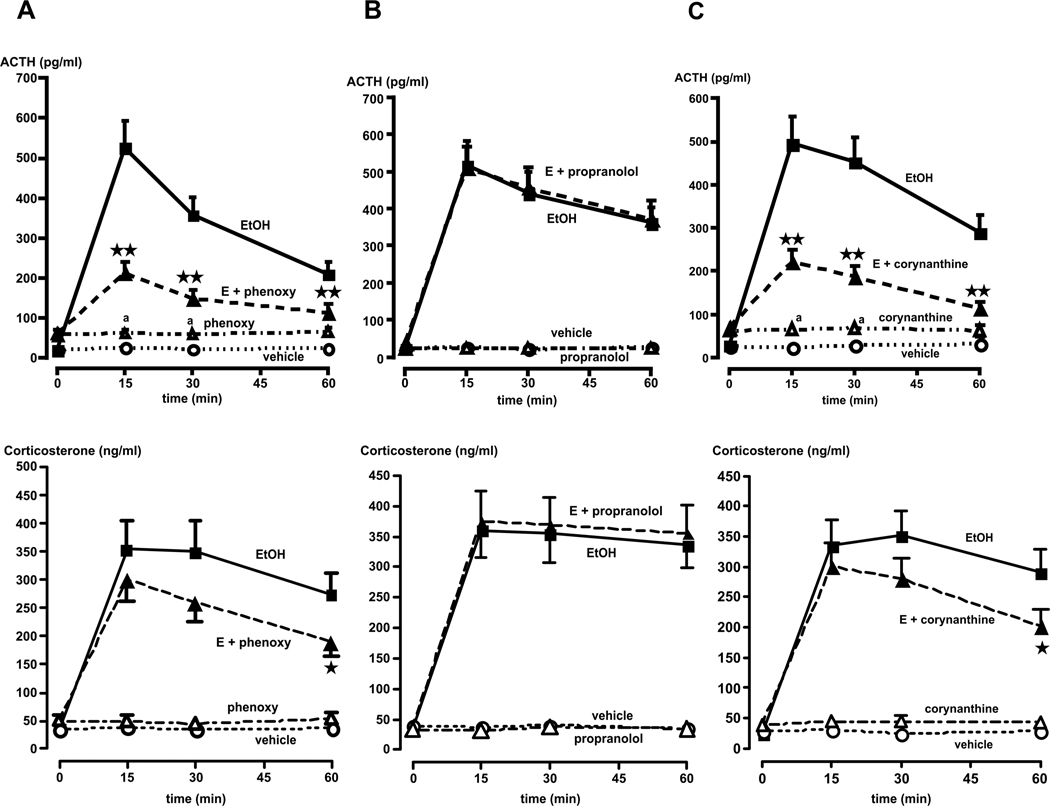Figure 8.
Effect of various adrenergic receptor antagonists on the ACTH (top graphs) and corticosterone (bottom graphs) responses to alcohol. (A) Phenoxybenzamine significantly (P<0.01) blunts the ACTH response to alcohol (E + phenoxy) at all times tested, compared to rats injected with alcohol alone (EtOH). In contrast, this antagonist only significantly (P<0.05) decreases the corticosterone response at the 60 min time point. (B) Propranolol does not alter the ACTH or corticosterone responses to alcohol (E + propranolol), compared to rats injected with alcohol alone (EtOH). (C) Corynanthine significantly (P<0.01) blunts the ACTH response to alcohol (E + corynanthine) at all times tested, compared to rats injected with alcohol alone (EtOH). In contrast, this antagonist only significantly (P<0.05) decreases the corticosterone response at the 60 min time point. Time = 0 indicates plasma ACTH/corticosterone levels immediately prior to alcohol administration. Each point illustrates the means ± SEM of 5–7 rats. *, P<0.05 and **, P<0.01 vs. EtOH alone; a, P<0.01 vs. vehicle.

